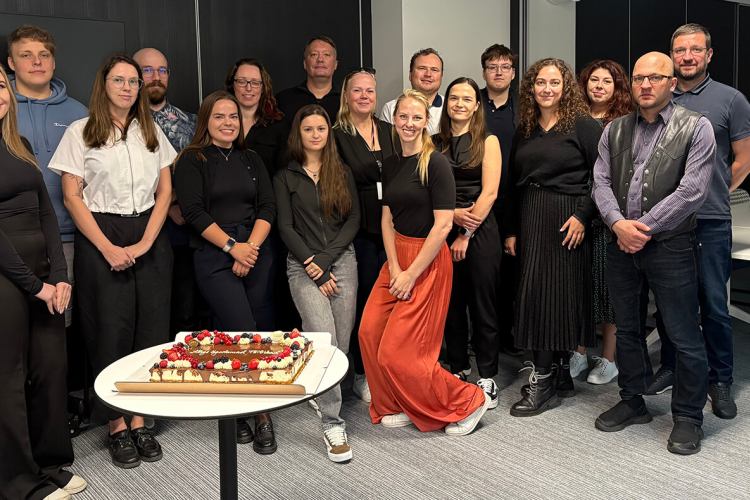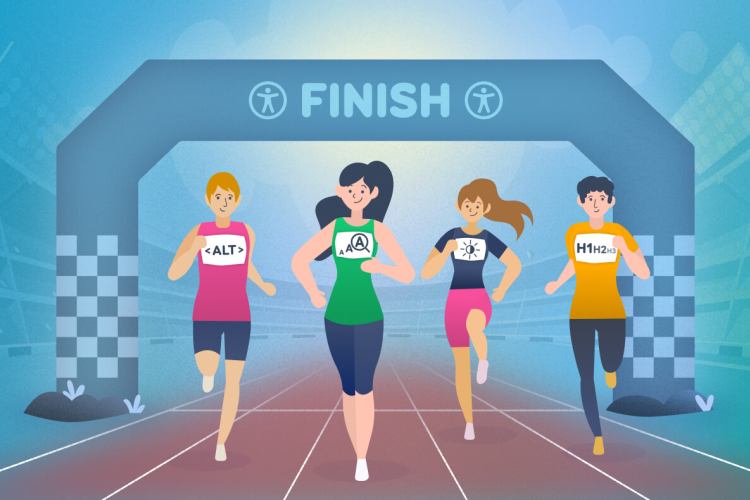Who is Who in User Experience Design?
Since a lot of our readers are often asking us about the skill sets of user experience designers, information architects, accessibility specialists and others, we decided to write a short overview of their roles in a user experience design team. We also added some close friends who we work with every day.
We (me and Hegle Sarapuu) were honestly a bit overwhelmed when we were writing this summary as the number of roles has grown a lot over the years. From the client’s point of view, these roles are often seen as services.
A professional UX team usually consists of the following roles
- Information Architect – works on the structure of the website or an information system. Their job is to create a navigation scheme or model that feels natural for the user. Their tools are card sorting, face-to-face and online interviews and various other research methods. These guys are known of chewing up stacks of post-it notes in just a day.
- UX Strategist – defines the vision behind UX design and connects design strategy to real business results. Also guides the design process, analyzes research data and supervises the core UX team. A lot of times the strategist is hired to advance the UX practice within a company.
- User Researcher – interviews the users and finds out how they behave, think and act. Their overall goal is to know who the user is and how he or she uses your product or service. The researcher tries to uncover the usage and decision making patterns hidden behind the obvious. User researchers also use neuroscience tools in order to get more accurate data.
- User Testing Specialist – is the person in charge of the user tests. He or she collaborates with the client, writes testing scenarios, moderates the tests and writes the analysis. The user testing specialist is also in charge of the biometric equipment (eye trackers, skin sensors, fEEG machines etc.). Just like the researcher, the testing specialist lives and breathes data.
- Interaction Designer – is in charge of prototyping. The interaction designer takes the information gathered by the information architect and user researcher and starts building an interactive prototype. This prototype is later tested by the testing specialist. Somewhat linked to visual design as you can´t really be a good interaction designer without at least a basic knowledge of design.
- Visual Designer – takes the prototype as a reference point and designs the visuals on top of it. In a UX team the visual designer is more focused on creating a design that supports the overall goal of the website. The visual designer can also be involved in creating the brand if the client already has someone working on the interface.
- User Interface Designer – focuses on designing user interface by using design patterns and is somewhat less focused on the interaction. Often combines the roles of an interaction designer, visual designer and user researcher.
- Service Designer – creates the experience when using various services instead of products, websites or information systems. Methods used are very similar (some are the same) to those used in UX design, often wearing different names, i.e. customer journey instead of storyboarding.
- Art Director - is in charge of the overall visual appearance and communication. The visionary behind the project. This role is more akin to digital agencies rather than user experience agencies.
- Accessibility Specialist – evaluates the accessibility of a website or an information system i.e. how well a person with a disability can use the website. The specialist uses methods mostly based on heuristic evaluation. Good accessibility is especially important to governmental websites.
-
Content Strategist – is often confused with the editor or copywriter, but in fact holds a more analytical role. Their effort ranges from content analysis to change management to information architecture.
These roles are often close friends of the UX team
- Copywriter – writes compelling and highly understandable text (or copy) that makes people either sign up, use the service or click on the buy now button. The work of the copywriter often begins in the prototyping stage. A critical part of the overall user experience. You simply cannot have a good user experience without good copy.
- Product Manager – sits in the middle of the UX, development and business teams. Represents the needs of the end user and is a voice of reason. Product managers tend to have a good grasp of UX basics.
- Front-End Developer – takes the finished prototype as an example of the interaction and writes the code based on the visual design. Because of the interactive prototype he does not have to figure out the interaction himself, meaning less errors and iterations.
- Back-End Developer – The back-end to a website is almost everything the user can't see and it usually consists of three parts: a server, an application, and a database. Often a lot trickier than front-end development.
- Business Analyst – does the pre-analysis (which is just another word for business analysis) of the information system. The business analyst gathers data on how the business itself is run, its weak spots and how the information system is used today or how it will be used in the future.
- System Analyst – specializes in system design and analysis. Their role is to find out the requirements of the new system. They might also test functional and non-functional requirements. Words like UML and BPMN are like sweet honey to their ears.
- Quality Assurance Specialist – tests the code for errors. Modern quality assurance also includes user testing, but this is often not the case in the real world. Usually the two roles are separate and QA deals only with the code side of things, leaving usability tests to user testing specialists.
- Marketing Specialist – is there to come up with a comprehensive marketing plan and is responsible for building the brand and communication strategies. Their main question is what I need to do in order to make this product a hit. Marketing specialists play a major part in the overall user experience.
- Project Manager – makes sure the project runs perfectly and is finished on the deadline, generates quotes when needed and keeps an eye on the project. Often underrated, but actually a highly important role in completing the project successfully.
- Project Supervisor – a project management expert who has deep knowledge in IT project management and development. Acts as the liaison between the business side and development, but does not interfere with the project manager’s work. Gives a heads up if there is a chance that the development is delayed or if there are any potential problems in the pipeline.
Conclusion
A lot of these roles are often put under the single UX design umbrella. Now you know that user experience design is much more than just visuals. It is how the product, service or the website works.
If you want to know more then check out the Interaction Design Foundation and see what kind of UX courses you can take.They provide open educational materials, made by the worlds design elite.
Did our list have a new role that you did not know yet? Leave us a comment down below!







